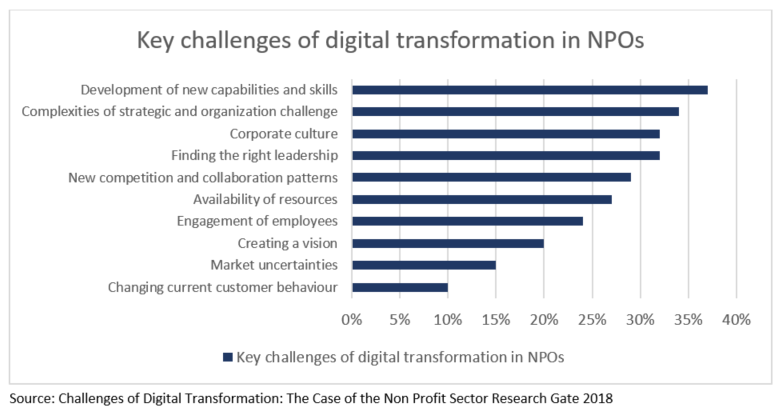Digitalisation or digital transformation has been the talk of the town for some time now. However, when it comes to not-for-profits, is there really a need to digitalise? How does digitalisation help not-for-profits to improve work processes and donors’ confidence?
In this article, we shall look at how not-for-profits can digitalise their operations and how digitalisation can position not-for-profits as responsible, accountable, efficient, and be transparent to their stakeholders.
What is stopping not-for-profits from going digital?
Let us first look at the top three issues that deter not-for-profits from digitalising their work processes or operations:
- Change can bring about resistance, insecurity, and self-induced fear. As digitisation is in its very nature a disruptor or a change agent, not-for-profits are especially fearful that their company structure, business processes, and culture may be disrupted. From the view point of a not-for-profit, a slight change could potentially crumble its branding and reputation.
- Data breach comes next as not-for-profits hold sensitive and personal data of their beneficiaries and donors. Hackings into databases are rampant. One of the local cases is the Singapore Red Cross data leak in 2019. Close to 4,300 potential donors’ data was leaked through their website that recruits blood donors.
- Public perception is another deterrent for not-for-profits to digitalise. When not-for-profits spend on IT services, the public might see these organisations as ‘squandering’ their funds. “Shouldn’t they be using the funds to better help their beneficiaries rather than spending on IT services/solutions?” It is, therefore, necessary for not-for-profits to communicate with their stakeholders about what digitalisation is and the benefits it brings. However, NPOs have to first convince themselves about the benefits of digitalisation before they can convince their stakeholders.
The diagram below details other challenges not-for-profits may face in the process of digital transformation:

Despite the challenges, when not-for-profits look beyond their fears and insecurities they will see the importance and benefits of digitalisation. Cybercrimes may be a hard nut to crack and it may be costly to digitalise work processes, especially in smaller not-for-profits. But they can take baby steps and pace themselves throughout the digitalisation process. They have to understand that digitalisation is not an overnight change, it is a gradual transformation that yields long-term gains.
Digitalisation is an enabler rather than a disruptor
COVID-19 has increased the adoption of technology in the not-for-profit circle. One of the companies is Filos Community Services. With the use of technology, it can now conduct virtual tuitions on Zoom and Google Meet platforms. This is especially beneficial to students from low-income families, as online tuitions are more affordable.
Certain not-for-profits have also gone online to raise funds. Club Rainbow (Singapore) has turned to online platforms such as giving.sg and give.asia to host their fundraising campaigns.
Concerning cybercrimes and PDPA related matters, NPOs can choose to outsource these complex aspects of their digitalisation strategies to an external vendor. This will save them money from engaging an IT expert and pay for costly applications and solutions – investing funds in areas that can help NPOs to focus on strategising and growing their operations is the right way to go.
Conclusion
Let us summarise what not-for-profits can gain from digitalisation:
- Responsibility: Digitalisation allows not-for-profits to limit user rights to access sensitive and confidential data for security purpose
- Accountability: Digitalisation enables continuous contact with stakeholders and keeps them informed of the latest news, such as volunteering opportunities and donation drives
- Efficiency: Digitalisation eradicates manual work and increases work productivity. It also helps to simplify work processes and minimise human errors
- Transparency: Digitalisation allows transparent sharing of cross-organisational information that builds donors’ confidence and trust



